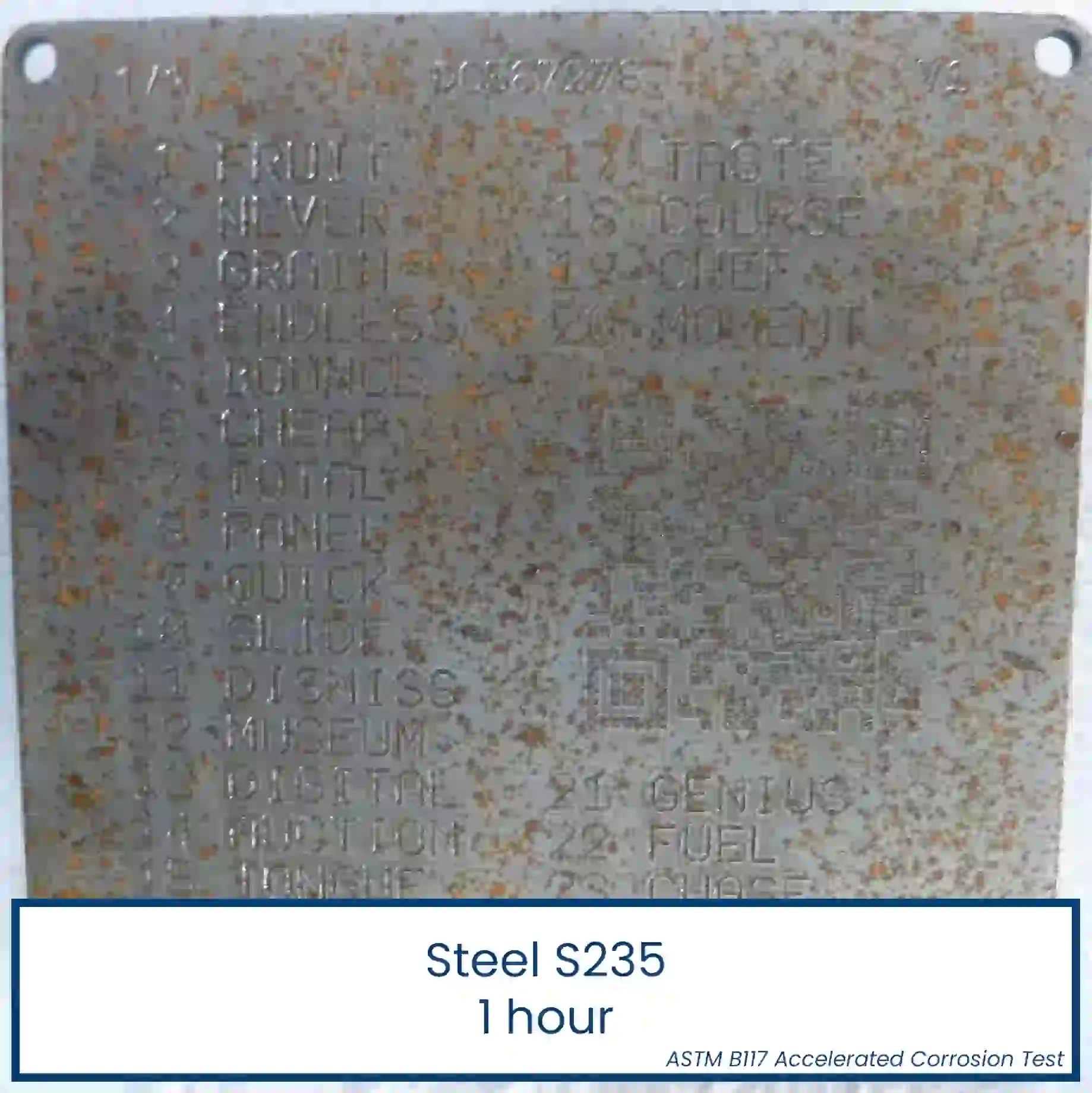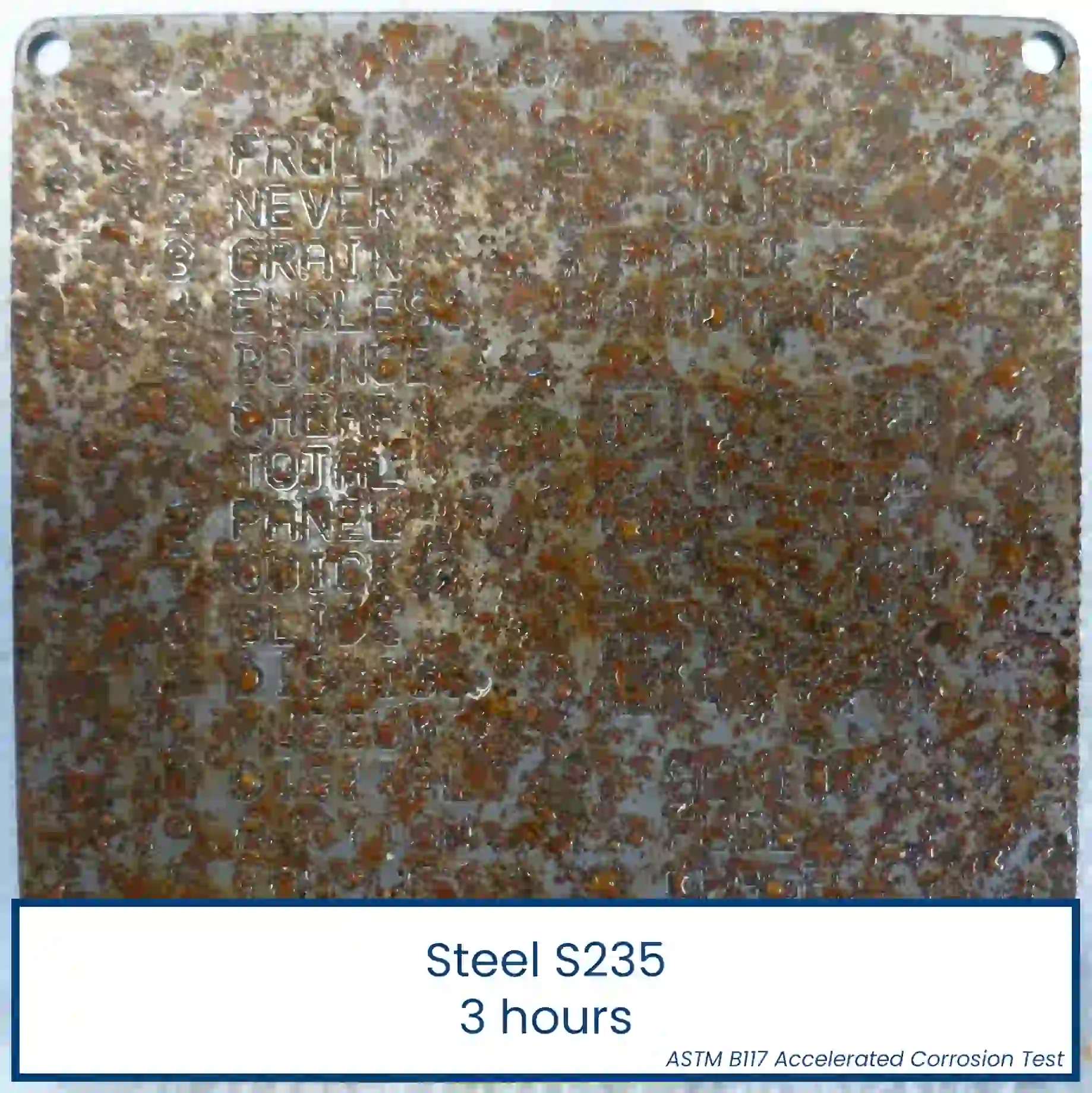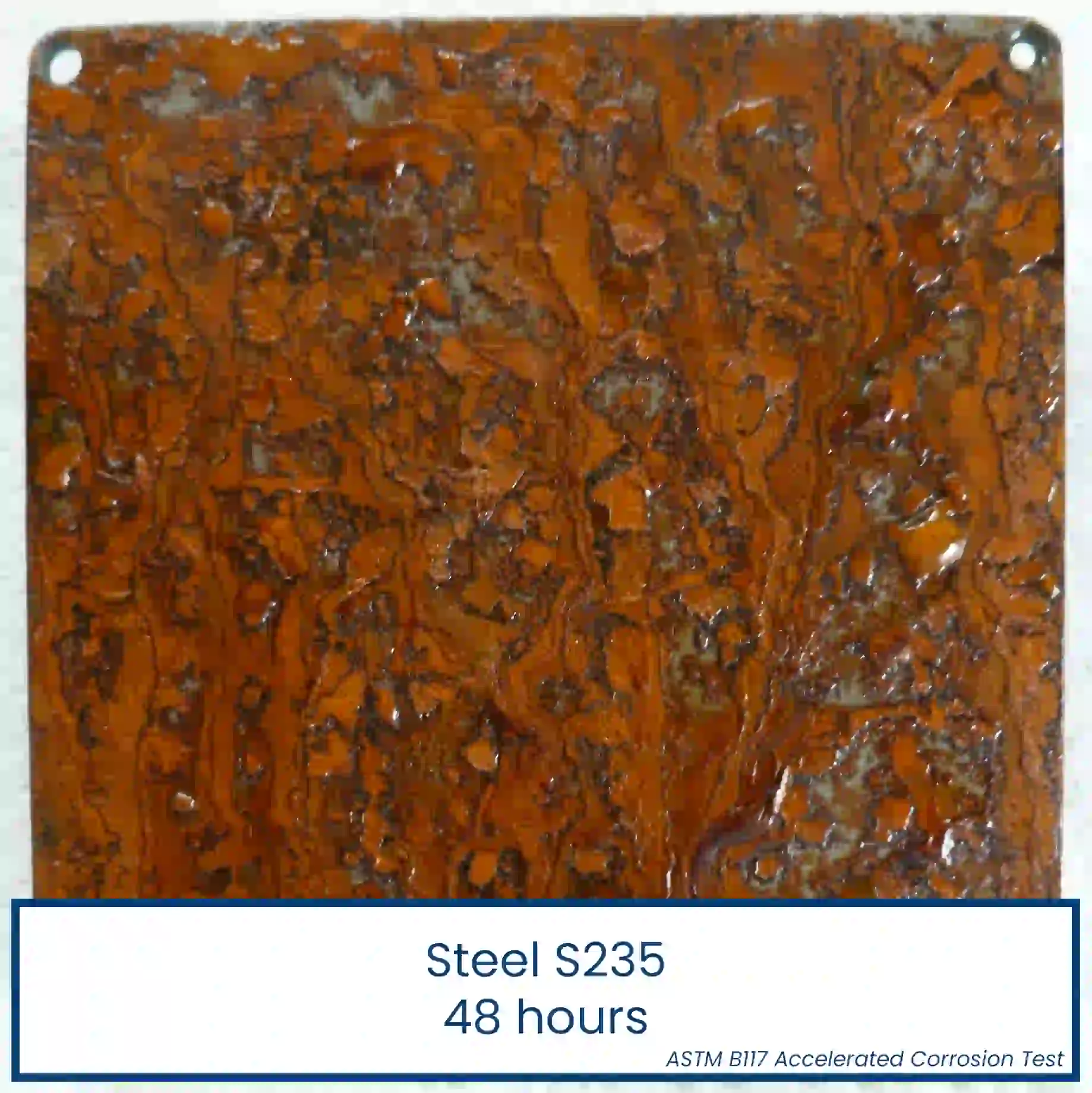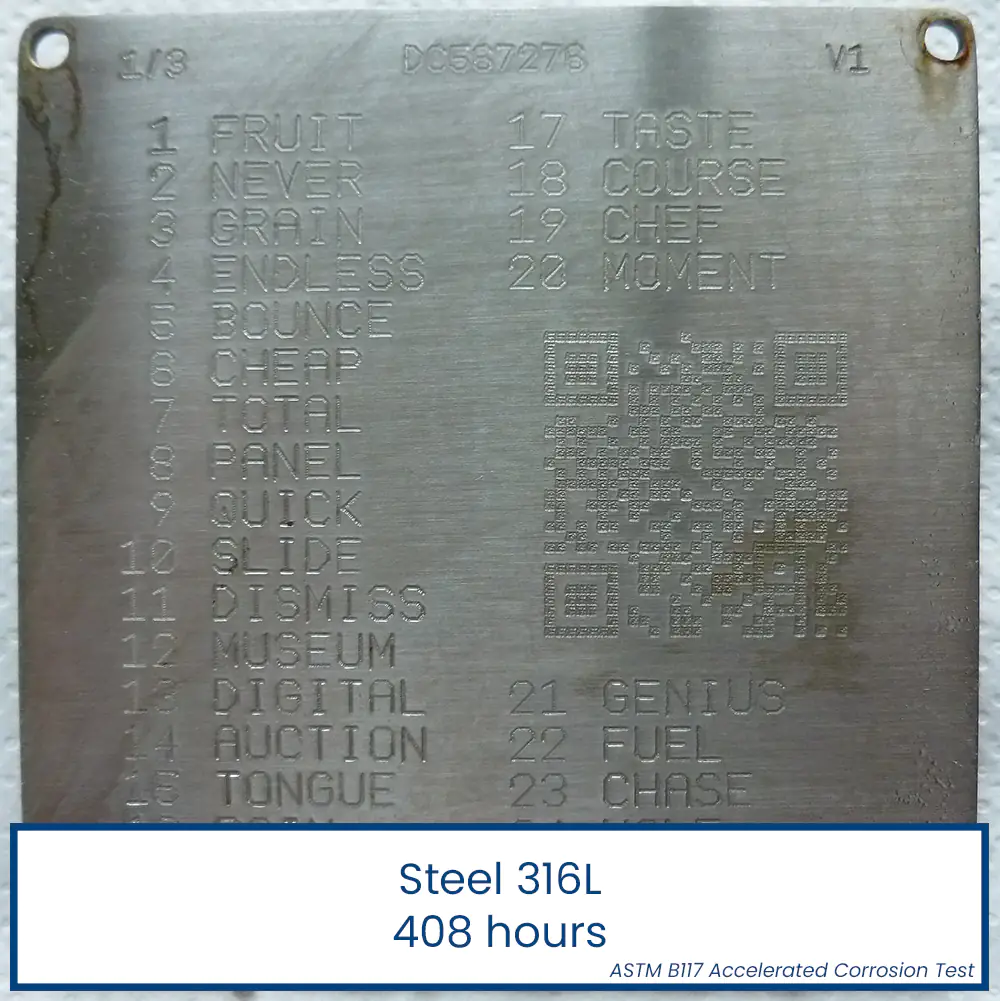Corrosion Test of The SeedHammer Steel Plates
See how the SeedHammer steel plates perform in an accelerated salt fog corrosion test (ASTM B117).
The original SeedHammer plates are made of stainless steel 316L - also known as marine grade. In order to test the corrosion resistance of steel 316L, we subjected the material to an internationally recognized accelerated corrosion test known as ASTM B117. The European equivalent of this test is EN ISO 9227.
We understand that most (if not all) users will never intentionally expose their SeedHammer backup plates to marine grade environment or bury them in the ground or other moist environments without any protective casing. Nonetheless, we want to adopt the same "paranoia"-approach to corrosion that we apply to everything else (such as our code) and see how the plates perform.
What is ASTM B117
ASTM B117 is a standard by the American Society for Testing and Materials (ASTM) that outlines an accelerated corrosion testing method for metallic materials. This test simulates a corrosive salt spray environment to quickly evaluate the corrosion resistance of materials. The procedure involves exposing materials to a saline fog at a controlled temperature, aiming to accelerate the corrosion process and assess the protective quality of coatings.
Benchmark
It's challenging to directly correlate test results with real-world exposure, as this depends on a multitude of variables in the conditions to which the metal is exposed. Nonetheless, ASTM B117 serves as an ideal benchmark for comparing alternatives to identify the most suitable material. For this reason, we chose to benchmark the stainless steel 316L against normal steel S235.
The Results
We created a duplicate of the original plate using S235 steel. Before the test, we engraved the same seed onto each plate.
The Stainless Steel 316L Plate
The original SeedHammer plate shows no signs of corrosion throughout the test. The plate remains easily readable even after many days in the test cabinet, and the test is concluded after a full 17 days without any negative effects on the plate.
After 17 days (408 hours), the testing facility decided to halt the test, as no further changes in the material were expected.
The deposits around the screw holes are not due to the material but rather some residues from ordinary steel touching it (screw threads).
The ordindary steel S235 plate
The benchmarking plate demonstrates the severity of the ASTM B117 test. Within just one hour in the test cabinet, the plate showed signs of corrosion, and after few days it became totally unreadable due to severe amounts of corrosion.
 Steel S235 after 1 hour of testing.
Steel S235 after 1 hour of testing.After 1 hour, the plate shows signs of corrosion, although not to the extent that it becomes unreadable.
 Steel S235 after 3 hours af testing.
Steel S235 after 3 hours af testing.After 3 hours, the corrosion has progressed to a stage where reading the plate becomes difficult, and the QR code can not be scanned at all.
 Steel S235 after 2 days of testing.
Steel S235 after 2 days of testing.After 48 hours, the plate is covered in corrosion to the extent that it becomes unreadable and is effectively useless.
It might be possible to retreive some information from the plate if the corrosion is grinded down. However, as the S235 acts as an benchmarking plate and clearly shows that steel 316L is far superior the experiment concluded here.
Conclusion
The test illustrates the resilience of stainless steel 316L to corrosion, even when exposed to harsh conditions for a prolonged duration.
Based on these results, we are confident that stainless steel 316L is an appropriate material for the SeedHammer plates in regard to corrosion.
